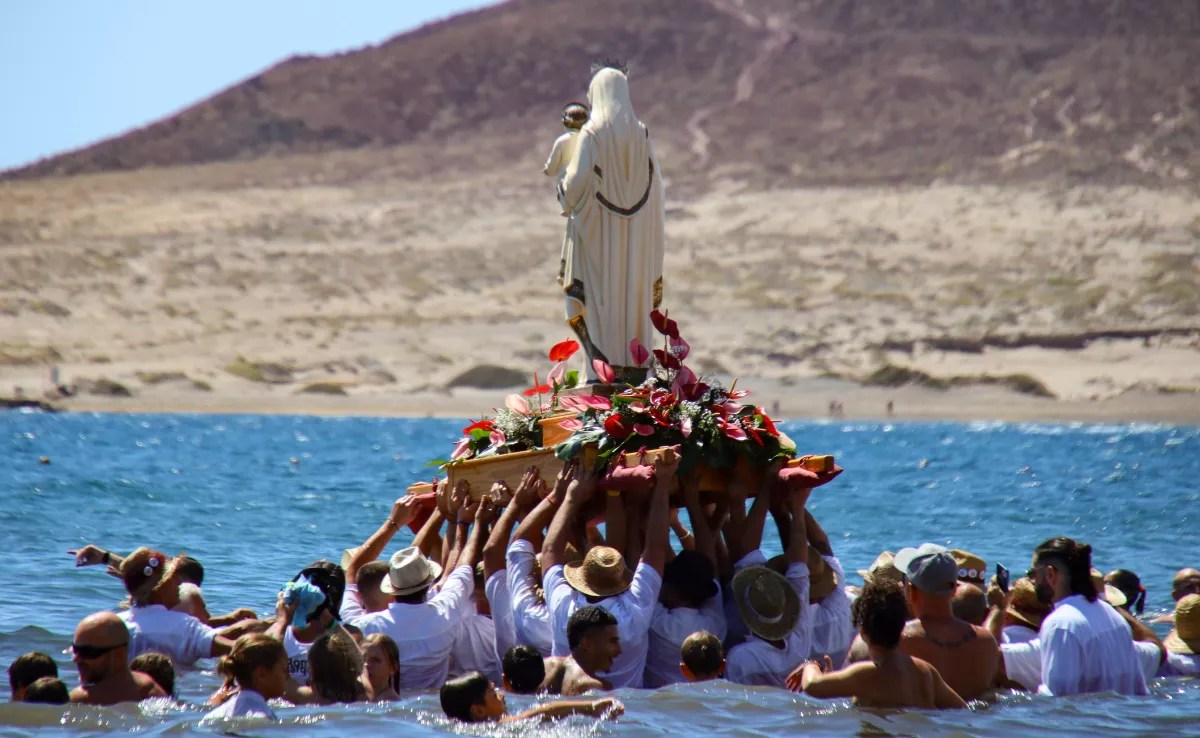
SANTA CRUZ DE TENERIFE, 17 Oct. (EUROPE PRESS) –
The Minister of Agriculture, Livestock and Fisheries of the Cabildo de Tenerife, Javier Parrilla, has held a meeting with the mayors of Güímar and Arafo, Gustavo Pérez and Juan Ramón Martín, and with the mayor of Candelaria, Mari Brito, to inform them of the progress in the reclaimed water irrigation network of the Güímar Valley, as well as the future Arafo pond project.
Javier Parrilla, accompanied by the technical service of agrarian structures, also presented to the three municipal officials the temporary measures that are being articulated, at the proposal of the president of the Cabildo, Pedro Martín, for the gradual introduction of reclaimed water while progress is being made with the implementation of the new irrigation network and the pond.
As explained by the island official, it is intended to take advantage of the reclaimed water from the Santa Cruz treatment plant, which is currently transported to the Valle de San Lorenzo (Arona) hydraulic complex, and bring a daily volume of about 2,000 cubic meters a day to the reservoir. of Guimar.
“From the Cabildo we are already working on the installation of a filtration and desalination station in this reservoir to improve the quality of the water and that it can be supplied with guarantees to the irrigators of the area, in approximately six months, through existing networks,” he pointed out.
In this sense, Javier Parrilla insisted that the future of the island’s agriculture “goes through reclaimed water, which is already helping the island to develop with greater energy efficiency and with a production model based on the circular economy”.
With regard to the future Arafo pond, the Minister reported that the General Meeting of the Tenerife Island Water Council (CIATF) has already approved its inclusion in the Tenerife Hydrological Plan (PHT) and that it is currently in the public display for final approval.
The Güímar Valley reclaimed water regulating pond will be located between the Yoquina Ravine and Camino el Portugués, at a crest height of 309 meters above sea level. It will have a capacity of 99,451 cubic meters and its first phase will be able to supply 400 hectares of existing crops and 390 hectares of abandoned agricultural land.
For its part, the irrigation network will extend over 46,000 meters, with tubes between 100 millimeters in the terminal branches and 500 in the main branch.
For its design, we proceeded, in the first place, to characterize the risks of a large part of the farms, in order to determine their needs, both in terms of flow and pressure. Secondly, the demand was calculated during the months of greatest consumption, which coincides in a large part of the crops with the summer.
Once the needs were known, the diameters of the network pipes were optimized to guarantee a distribution system on demand, which is characterized by allowing the farmer to choose his own irrigation schedule, without relying on shifts.














